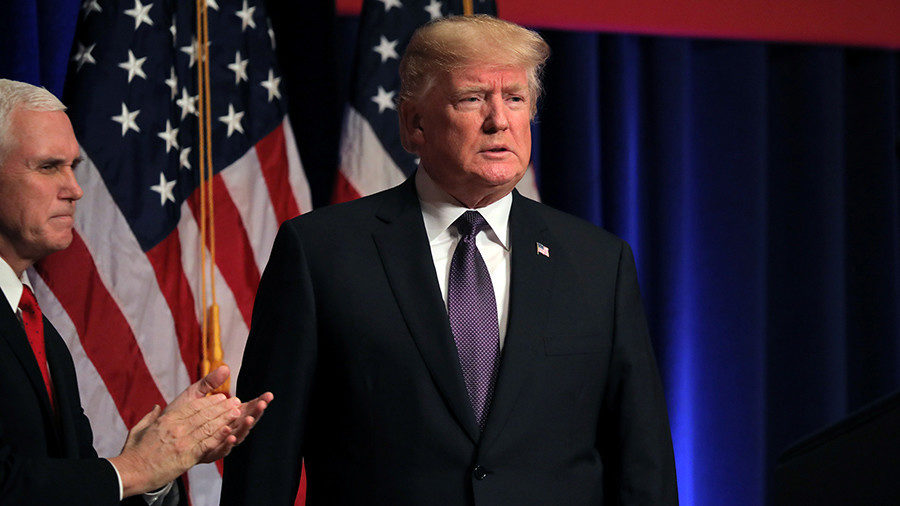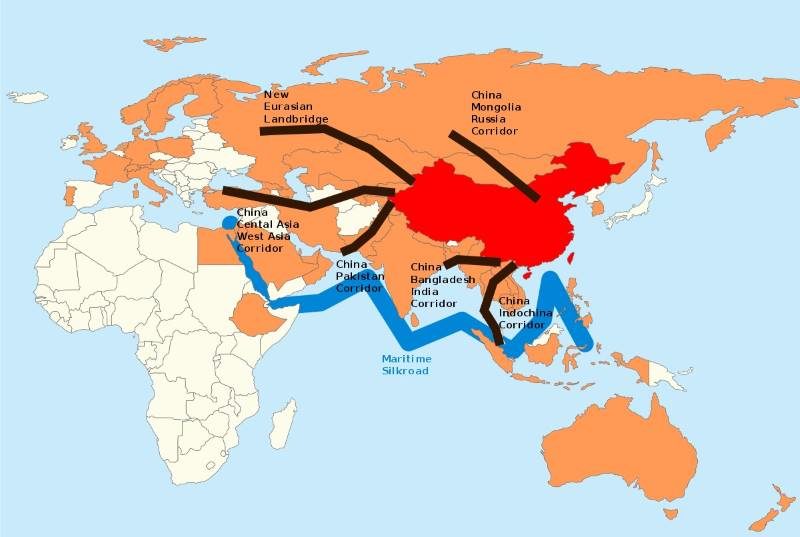The content of the speech was hardly shocking, although for anyone hoping against hope that Trump would represent even an iota of change, it's now abundantly clear that neo-con foreign policies remain steadfastly in place, only this time with a Trump brand seal of approval.
What's more pertinent though is that the world now faces two distinct models:
- The US model of "Win-Lose"
- The Eurasian model of "Win-Win"
By contrast, President Xi has promoted the simple and steadfast concept of "win-win" to define how 'Socialism with Chinese Characteristics for a New Era' will express itself in terms of foreign policy.
On the 30th of October, Xi Jinping stated,
"As a beneficiary of and contributor to economic globalisation, China's development is the opportunity for the world. China's opening up is not a zero-sum game but win-win cooperation".This contrasts sharply with the US President who just stated,
"We also face rival powers, Russia and China, that seek to challenge American influence, values, and wealth. We will attempt to build a great partnership with those and other countries, but in a manner that always protects our national interest".The contrast could not be clearer.
The Chinese President looks with optimism on the prospect of a more interconnected world where all nations are allowed to play up their strengths while other partners can contribute in areas where certain states are lacking. Donald Trump instead sees the world as a zero-sum competition where another nation's success or another group of nations finding success is a de facto sign of the US failing. It should be noted at this point that when Chinese officials talk about globalisation, they are speaking primarily about logistical inter-connectivity and diplomatic cooperation. At this point it is important to clarify that while for many western ears, the word globalisation has unfortunately become synonymous with neo-liberal economics and post modern cultural attitudes, China defines the word in a far more matter of fact way-free from such implications.
Rhetoric versus Reality
In reality, American geo-political ultimatums which amount to 'join us or we'll beat you', are proving far less attractive than the Chinese model. One Belt-One Road, which is emblematic of China's economic model has won favour in many corridors of the world because of its flexibility.
Contrary to what some claim, One Belt-One Road is not concerned with the liberalisation of customs laws (aka free trade), but about building the physical land and maritime infrastructure in order to bring existing and burgeoning trade routes into the 21st century.
The initiative is about creating fast moving, high capacity land and sea superhighways for commerce that work in accordance with existing national laws and regulations, but which help ease physical movement of goods in spite of laws which China does not seek to forcefully change.
China's approach to trade liberalisation is generally regional or bilateral in nature, insofar as Chinese officials tend to engage with existing trade blocs in order to reach accords on the legal standing of import/export rules. When no such bloc exists, China works on a bilateral or limited multilateral basis. Key examples include China working closely with the Eurasian Economic Union and ASEAN in order to foment new trade agreements - agreements which incidentally often accompany substantial sums of Chinese investment in order to make things worth the while from Beijing's perspective.
By contrast, the US has a tendency to try and set up free-trade initiatives before a common modern infrastructure can come into place thus making trade more realistic and at the same time levelling the multilateral playing field. While the US has used schemes like NAFTA to essentially make Mexico the workshop for US and Canadian companies who then sell to white collar US and Canadian workers at the expense of blue collar jobs, the Chinese model puts an emphasis pumping in local investment along its Belts and Roads so that nations can modernise and integrate in-line with cutting edge Chinese standards, all the while making no demands on trade liberalisation policies as a prerequisite for having good relations with Beijing. The US makes legal demands while dealing with existing infrastructure, while China fosters the growth of new infrastructure that in time will help close the wealth gap among developing nations, all while allowing them to devote their energies to the industrial sectors which are best suited to a given national economy.
In this sense, One Belt-One Road is the antithesis to US schemes like NAFTA and the abortive TPP, even though many in the west seem to conflate the concepts due to a fear that China is as short-sighted as their leaders have been.
Another western myth that ought to be shattered is that China is 'dumping' cheap goods on the world because of cheap labour. In 2017, the cost of labour in much of Latin America, almost all of Africa, much of South and South East Asia and many parts of Eastern and South Eastern Europe is cheaper than that in China.
China can no longer seriously be called a low-wage economy, especially when one compares Chinese labour costs to the growing industrial economies elsewhere. It is true that China's vast modern infrastructure is capable of outproducing many other mature industrial economies, but while many in the US blame China's socialist system on giving Chinese companies an unfair advantage over so-called 'free market economies', this is also based on a fundamental misunderstanding.
In the 1950s, the United States, whose economy was far less regulated and thus more 'capitalistic' than it is today, could produce luxury Cadillac cars in a far higher quantity than the rate at which West Germany could produce luxury Mercedes-Benz cars. While the Deng Xiaoping model of market socialism is certainly at the epicentre of contemporary China's success story, the US model of the Bretton Woods era makes it clear that a highly modernised and efficient western capitalist economy is also capable of outproducing most other nations.
A further irony about the 1950s United States vis-a-vis contemporary China is that much of the success of the US in the mid-20th century relied on a market economy benefiting from a war-time national infrastructure that had been converted to civilian use. If this isn't a US version of 'market socialism', I'm not sure what is.
What Trump Could Have and Should Have Said
While the US President defined China and Russia as "rivals", the fact remains that the US could have chosen a different path.
When he was running for office, Donald Trump complained frequently about the poor state of US infrastructure while also bemoaning Barack Obama's costly Middle Eastern wars.
The logical conclusion to these very apt criticisms would be for the US government to shift some of its spending away from the defence industry and towards injecting cash into domestic infrastructure projects. Furthermore, derelict factories could easily be modernised for the fraction of the price that it requires to take the US to further wars in the Middle East.
Trump has been a complete disappointment in this regard.
Beyond this, rather than simply complain about NAFTA and similar deals, the US could have recast itself from a free trade deal maker to the king of trans-American connectivity.
A Trans-American Economic Corridor
The Americas are the only part of the world that has thus far been excluded from One Belt-One Road. This would be a golden opportunity for the US to work with China to link up the vast space between the Canadian Arctic and Cape Horn to the Asia Pacific.
A joint venture of US and Chinese investment could have been used to create new land highways and corresponding maritime routes across the Americas - on either side of the Panama canal. In turn these belts and roads could be strategically linked to China's Pacific belts and roads with the US ports in Los Angeles being a natural hub. Furthermore, joint US-Chinese investment schemes could have poured investment into US ports such as those in Los Angeles to bring them in-line with some of the modern ports in China which are far more technically advanced.
This is what a US version of "win-win" could look like, but instead Trump stuck to the discredited "win-lose" model.
Automatic for the People's Republic
Many discussions about these issues negates the crucial matter of industrial automation and its effect on industrial jobs. This is where market socialism has a clear advantage over both capitalism and democratic socialism.
In a country like China, wealth - whether created by the hand of man or by machine, can be pumped back into the economy creating things like housing, infrastructure and necessary programmes to maintain people's lives to a certain mutually agreed upon living standard.
According to the classic capitalist model, a man replaced by a machine has been rendered obsolete and will be impoverished as a result. In democratic socialist models such as those in much of Europe, the poor are cared for through the funds raised from high levels of taxation, but in many cases, the country is not generating tangible wealth.
Market socialism allows for genuine wealth creation at a national level combined with the appropriate channels of wealth distribution that rely on pooling sovereign wealth rather than resorting to what amounts to punitive taxation on individuals.
In this sense, China shows how even domestically there is a win-win model for solving many of the problems that Donald Trump addressed as a candidate.
Conclusion
2017 should have been the year that the US decided to embrace the win-win model. This is not to say that the US would have or should have become China. The Chinese model is highly flexible in this sense. Donald Trump could have created a kind of Trans-American Belt and Road with US Characteristics for a New Era. Instead, Trump has opted to Make America Lose Again.





Reader Comments
Wasn't this a lesson Putin had to learn? and it took him many years to realize that American Imperial policy doesn't change with any change in teh White House.... that's the puppet show... all vetted and overseen by their minders.